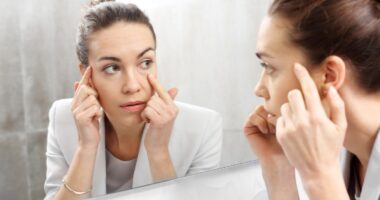
Lisa said: “Melatonin is crucial for a good night’s sleep, and there are many things in our current lifestyles which disrupt it’s synthesis: blue light from screens, caffeine, alcohol, tobacco, jet-lag, shift work, and since it is synthesised in response to a reduction in light hitting the retina of the eye, it can be a problem for the visually impaired.
“The precursor to melatonin is serotonin, a neurotransmitter present in the central nervous system, including the brain, but is most abundant in the gut; it carries signals between nerve cells and is more commonly known for its anti-depressant effects.
“In the response to fading light and ensuing darkness, serotonin is first acted upon by an enzyme to convert it to acetylserotonin, which is then converted to melatonin.
READ RELATED: Coronavirus: What is the R number and how is it calculated?
“The process involves stimulation of the hypothalamus in response to light perception via the retina, and the hypothalamus stimulates the pineal gland which initiates the conversion of serotonin into melatonin.
“Conversely as light hits the retina (and it does so through the thin skin of a closed eyelid), melatonin synthesis reduces, and we awaken.”
READ MORE: Covid new strain symptoms: Ten signs indicating you may have already had COVID-19
Source: Daily Express







